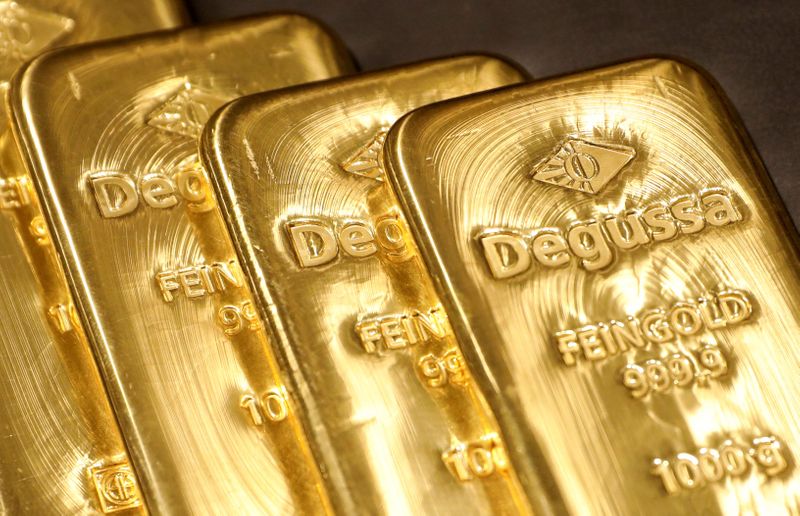This post was originally published on this site
https://i-invdn-com.akamaized.net/trkd-images/LYNXMPEG9L1U2_L.jpg
LONDON (Reuters) – Demand for gold from jewellers and central banks will remain sharply lower in 2021 than before coronavirus, but investors will keep prices high by stockpiling record amounts of bullion, Refinitiv Metals Research said.
Gold prices are near record highs after surging to $2,072.50 an ounce in August as investors in Europe and North America hoarded an asset they thought would hold its value through the pandemic.
But those high prices, along with coronavirus lockdowns, have collapsed sales of jewellery in Asia, previously the biggest driver of the bullion market.
Jewellery demand will fall 31% to 1,327 tonnes this year before rising 9% to 1,447 tonnes in 2021, Refinitiv Metals Research director Cameron Alexander said, releasing its latest quarterly report on supply and demand on Friday.
Central bank purchases will plunge by half to 312 tonnes this year and recover slightly to 385 tonnes next year, Alexander said.
Investors will continue to plug the demand gap, with exchange traded funds (ETFs), which store metal for investors, stockpiling 1,205 tonnes this year, three times the amount in 2019, and another 1,362 tonnes in 2021, the most ever.
Purchases by retail buyers of bars and coins will fall 6% this year to 917 tonnes before rising 13% to 1,039 tonnes in 2021, Alexander said.
Gold will average $1,890 an ounce next year, below the $1,965 price forecast by a Reuters poll this week, but prices could be volatile, Alexander said.
The July-September quarter saw the weakest demand so far this year, despite a recovery in jewellery fabrication, Refinitiv found.
Bullion owners in Asia sold gold, driving demand for retail bars to the lowest in over a decade, while central banks sold more gold than they bought for the first time since 2010 and ETFs slowed the pace of their stockpiling.
GRAPHIC: Global gold demand – https://fingfx.thomsonreuters.com/gfx/ce/qzjvqaajqvx/GFMS%20GOLD%20Q3.JPG

